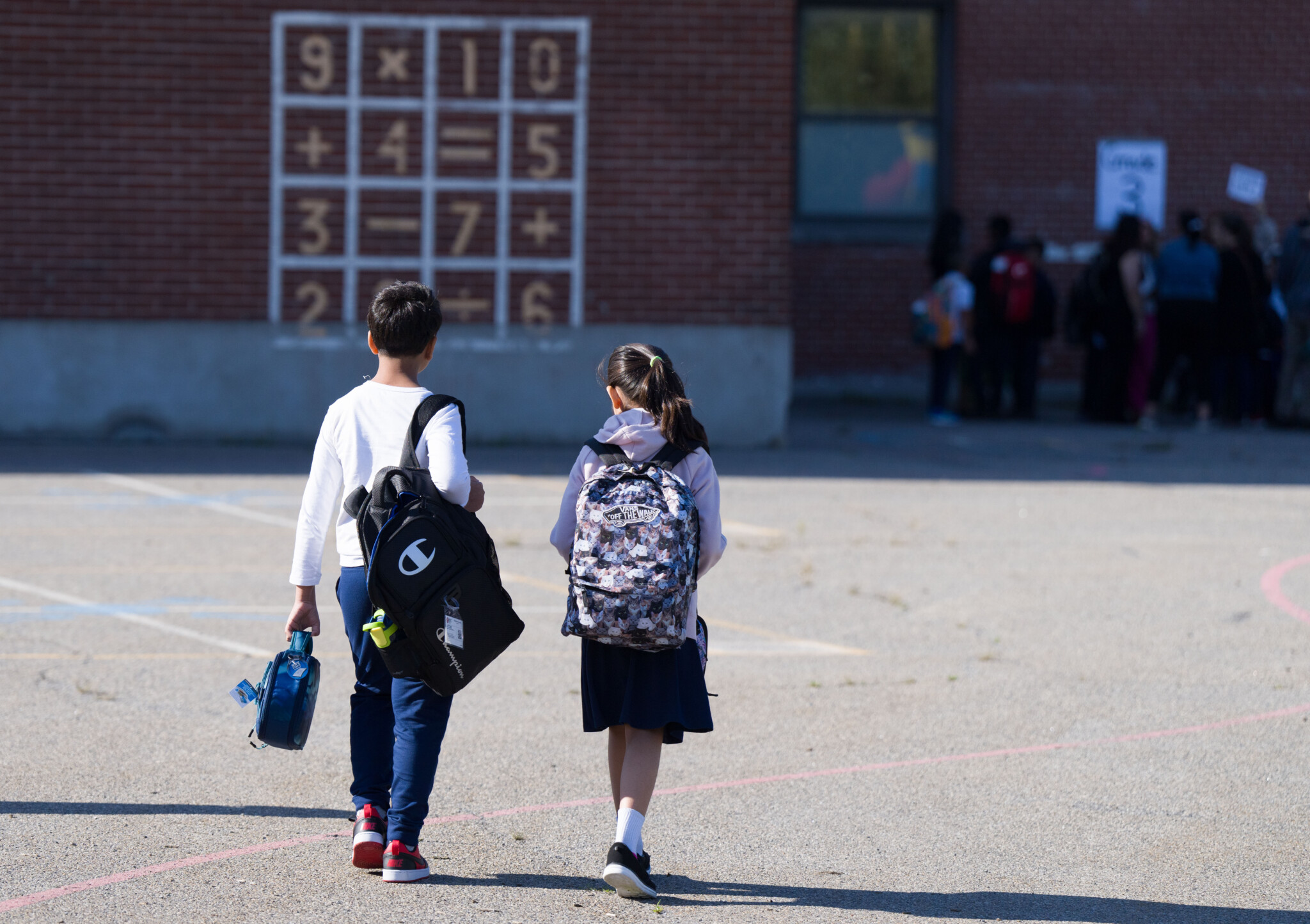Let’s talk about building schools. Alberta’s school space crunch is well-documented. But we’re not going to focus on the problems of overflowing schools, classes in hallways, and turning to empty offices to find room for students. Let’s talk solutions instead.
First, the facts. Alberta’s public schools simply cannot keep up with exploding enrollment. Despite the school boards’ best intentions, and recent investments by government, the simple reality is that it takes three to five years to build a new school and costs, on average, between $15-35 million. That’s a long time and a lot of money.
Now some numbers. Alberta’s three biggest school boards are the Calgary Board of Education (CBE), the Edmonton Public School Board, and the Calgary Separate School District. This 2024-25 school year, they expect to grow by 9,000, 5,000, and 2,000 new students, respectively—and this is in addition to the tens of thousands of new students that arrived to these boards in the last two academic years.
For the purposes of illustration, we’ll assume 16,000 new students.
School sizes and capacities vary: 500 is a good average student population per school. An estimated 16,000 new students would need around 32 new schools—in September! It’s safe to say there will not be 32 new school buildings this school year.
Time for a little more math. Thirty-two new schools will cost the government $800 million to build (using the average cost of $25 million per school). OK, so the problem is clear: Alberta needs a lot of new schools and they’re really expensive.
Even if the province could somehow miraculously build enough schools to catch up to today’s growth, it would be impossible to maintain that level of construction and investment in the years to come. The crowding crisis is here to stay—the CBE alone is predicting that by 2028, it will have more than 159,000 students—a growth of over 21,000 from this year. (For anyone tracking, that’s 43 new schools that will be needed for just one school board).
But there is a solution.
Alberta’s education ecosystem includes charter schools and independent schools, and independent schools are also seeing exponential growth. Since COVID, independent school enrollment has grown by more than 12,000 students. And it’s far from just wealthy families looking for new school options. Independent school families are more likely to earn combined incomes nearly one-fifth lower than the median household income in Alberta.
Resurrecting our original formula—the government would have had to build 25 new schools to house those 12,000 students had they joined the public system. Using that $25 million average cost, this means that independent schools have already saved taxpayers $625 million in just the last five years by accommodating those students.
Why does this matter? Because independent schools have the potential to be a crucial part of the solution to school crowding and strained education budgets. This is because independent schools have greater flexibility to adapt and grow, by not being part of a large, bureaucratic system. Unburdened by the red tape of government procurement processes, independent schools could quickly raise funds and get construction underway.
More importantly, parents want to send their kids to independent schools. In 2023-24, independent school enrollment grew by 10.5 percent, three times the rate of public schools’ growth and more than double that of separate schools. Many independent schools still have long waitlists. So what’s preventing independent schools from growing even further?
Capital. Independent schools in Alberta are responsible for 100 percent of their capital (building) costs, which is a significant financial and logistical barrier to start-up and growth. As we’ve established, schools are incredibly expensive to build, and it’s difficult to access old surplus buildings.
So it’s time for the government to harness the creativity and entrepreneurship of Albertans to solve the school crowding crisis together through a one-time capital investment for existing independent schools and new school start-ups.
This should take the form of a one-time solution to the current problem. Supporting independent schools in funding construction would spark an incredible opportunity for growth and would be an offer that many schools would eagerly take. As independent schools accommodate more students, it would ease the pressure on the public school system, including by reducing physical crowding and easing the strain on teaching and other resources.

Students arrive for their first day back to school at an elementary school in Montreal, Aug. 29, 2024. Christinne Muschi/The Canadian Press.
A modest investment of around $100 million (which is less than half of the $215 million the government announced last month to help ease the space crunch) could be used by accredited, funded independent schools (or new start-ups) for capital expenses such as buying, leasing, or expanding a school building.
This money would be a forgivable loan, as long as certain conditions are met. Each school could apply to receive $250,000 to $3 million, but they must meet three specific criteria for the loan to be forgiven.
First, it must raise a matching commitment from the community. This is not free money, but a partnership with civil society and leveraging community investment. Second, it must see a measurable increase in school enrollment. Schools must set enrollment targets, and the amount of loan forgiveness would be based on how well they meet that target. Operational funding (70 percent) would remain the same, all other capital requirements would remain the same, and neither elite independent schools nor registered independent schools would be eligible. Third, the school would need to make a long-term operational commitment. Schools must continue operating for a minimum of ten years; otherwise, the value of the loan must be paid back. This would respect taxpayer investment and prevent fraud.
Back to numbers—startling numbers, in fact. The average growth rate for the independent school sector over the last four academic years (2019-20 to 2023-24) was 8.3 percent. Let’s assume that with this capital investment plan, the average annual independent school growth rate hits an average of 12.5 percent per year for the next five years.
That would mean 36,477 more independent school students by 2028/29. Returning to our assumption of 500 students per school, equalling 73 new schools, and each school built at a cost of $25 million, that would mean the government would save approximately $1.83 billion in capital costs.
And how many schools would benefit? Breaking the $100 million into the following envelopes: $3M (times 10 schools), $2M (times 10 schools), $1M (times 20 schools), $500,000 (times 40 schools), and $250,000 (times 40 schools), this funding would mean at least 120 schools across the province could benefit. Alberta has 180 independent schools at present, meaning that more than two-thirds could see assistance.
Properly executed, this program would likely begin to show results within one year and would result in significant savings for the government. Parents and students win as more children get the educational experience that best fits their needs. The government wins as it finds a creative and positive way to solve the crowding crisis. And all Albertans win because good fiscal policy benefits everyone. The solutions are there—let’s seize them.








